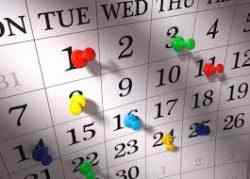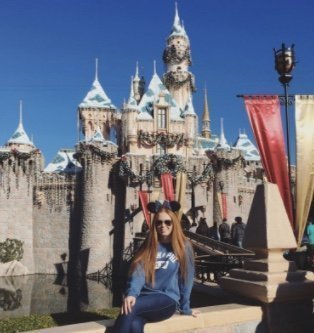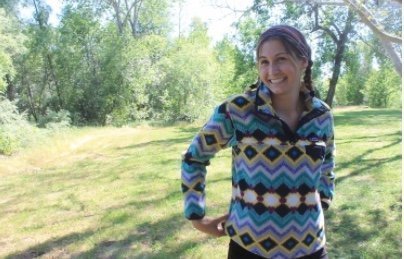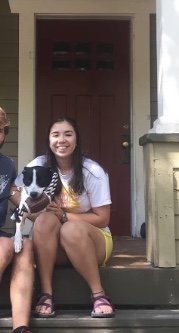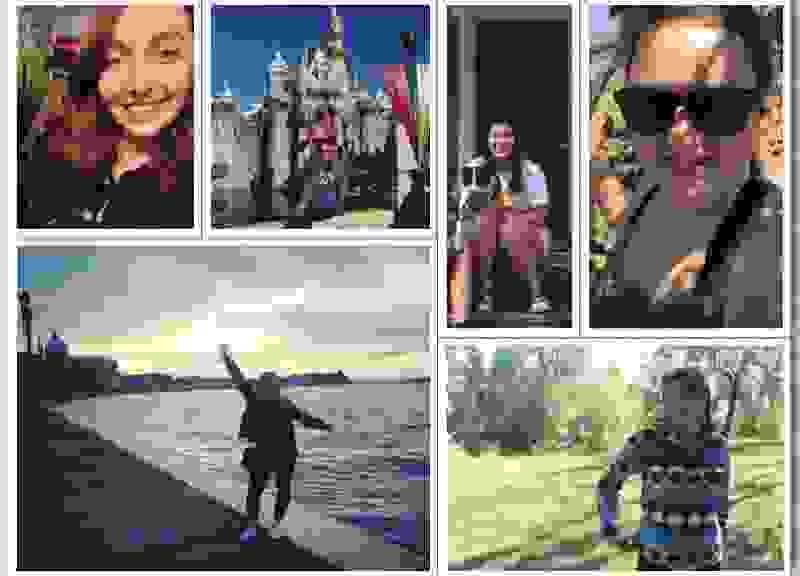
Featured Bloggers: Alison, Colleen, Tracie, Kim, Jorden & Savannah
This first make cycle was such a wonderful and different experience in comparison to my other English classes throughout my college career. Our first week began with a major focus on our series books which mostly consisted of A Series of Unfortunate Events. I was in one of the many Series of Unfortunate Events groups and had some interesting discussion over the course of the two week make cycle. Most of our conversations centered around the themes of these books and whether or not we would include them in our classroom. The general consensus was that yes, we would include them in a class library as we all enjoyed them as children and thought that the educational aspect would be beneficial. One of conversations brought forth the issue of child neglect, which is the central conflict of all the troubles and adventures the Boudelaire children take part in. I see the different caretakers and villainous Count Olaf to be a reflection of the foster care system and that many children do not have the safety and security of a stable home life. I know that there are good people who take in foster children–this is reflected in that not all of the caretakers of the Boudelaire children are evil. Throughout the series there are many people who love and care for the children just as there are kind people in the foster care system. I feel that these books will help my students develop compassion for those less fortunate and give validity and a place where kids who may not have the best home life to see their own stories being told.
My favorite part of class for both weeks of the make cycle was the quiet reading in class. In Donalyn Miller’s book, Reading in the Wild, she mentions that when she sets up the structure of her classroom for the school year that no matter her lesson planning, she tries to never shorten the in-class reading time. I feel this value reflected in our own class and find it so important. Our lives are so entirely chaotic that giving us (and our future students) a space where they can just be and read and go on their literary adventures is just simplistically beautiful to me.
With our first week of the make cycle came our first picture book presentation! The author discussed was Peter Reynolds and the book we had read aloud to us by the presenters was The Dot. This book cultivated a nation-wide movement in schools to celebrate International Dot Day where children are encouraged to make their mark in the world and participate in creative activities together centered around dots. I really enjoyed this presentation because we got to make our mark and create pictures and works of art starting with a dot. The presenting group did a lovely job of introducing their author and beginning our Dot-work with their own picture that they drew along with us. I am excited to implement this activity and International Dot Day into my own classroom. After finishing our pictures, we took a group photo and tweeted out to Peter Reynolds.
The beginning of our second week of the make cycle got off to an exciting start. We got to take a look at our 8th grade buddies’ Instagram and our upcoming book list that we will be reading alongside the 8th graders. I’m so excited to be reading along with these students and to see how their teacher provides a learning space for her students. Taking a look at some of 8th graders segwayed into discussing Donalyn Miller’s prolific collection of books and the understanding of her student’s tastes when providing them with book choices. Kim brought up an excellent question: how are we going to know which books our students will enjoy? Basically, we are never allowed to stop reading books. Ever. BUT! Isn’t that great though? I think reading what a student reads is essential in understanding their view of the world. With book choice came book purchasing…Where do we begin? The best places to start the book collection would definitely be yard sales and book sales at local libraries. The 8th grade teacher our class is partnering with had a Gofundme page earlier this year to help with the cost of purchasing books for all her students. At the beginning of this semester, Kim purchased 30 copies of Love That Dog so that we could all read it together as a class. The bottom line is that there are ways to start our libraries now for our students, and beginning as soon as possible (like, yesterday) is our best option.
Another strength Miller has as an English teacher is her allowance for book choice. So often in our own experiences we were not allowed to choose our book lists. Miller even allows her students to not finish a book if they really can’t get through it. She does, however, point out that it is wise to keep an eye on the readers who rarely finish a book as it could be a sign of some other struggle besides a dud book. The class discussion centering on choice was so interesting because our own struggles as young readers was disliking the forced reading with no choice. However, now as adults some of us struggle with so much freedom of choice that we often don’t know where to begin.
Our second week ended with a very touching picture book presentation where we had Chrysanthemum by Kevin Henkes read to us as a whole class while we simultaneously took part in an activity. Chrysanthemum tells the story of a little mouse named Chrysanthemum and the struggle with bullies over her name when she begins school as a little mouse. For the activity, we had paper hearts that we would crinkle every time something negative was said about Chrysanthemum’s name. The presenters, Anna-Lena and Sydney, explained that this activity is often used at the start of a school year to show kids the effects their words have on other people. Although we did un-crinkle our paper hearts, we could still see the crinkles left on them as proof that words leaving lasting impressions even if we no longer believe them. I loved this activity and book and would definitely add it to my class. The book is already on my GoodReads list for my classroom.
The ultimate culmination of our first make cycle together were our makes! I was so excited to take a look at what everyone made and was not disappointed. I chose three makes to highlight for the blog and all of them are from A Series of Unfortunate Events.The first is Sean’s Wanted poster of Count Olaf. I thought this was so clever, and I especially loved that he actually posted it on a pole like a real Wanted poster. The idea behind Sean wanting kids to hunt down and expose Olaf showed a real love for the story, and it was an idea that seemed so original.
The second make that really caught my eye was Jamie and Brittanee’s. It might be because I am craving pasta and nothing other than pasta seems important right now, but I loved that she made the dish the children made as a team. One of the things the Boudelaire children do best is solve problems with one another, and I think making the pasta they made was a great way to pay homage to that particular trait the children have.
The third make that I found to be really creative was Megan and Jody’s dictionary of Sunny’s baby phrases that Lemony Snicket defines throughout the books. I admire their skill at hunting down the amount of phrases to define. I also would literally have never thought of this and thought it was a really interesting idea to collect Sunny’s phrases.
Overall I really enjoyed this first make, and am so excited for the rest of the class to unfold. Looking through everyone’s makes made me really excited to do my own in the coming weeks!
Author Bio: Alison is a born and bred Northern Californian and loves comfy sweaters and coffee almost as much as she loves Jane Austen novels. As a kid, she would often get in trouble for reading late into the night, and is excited to rekindle her love of reading with her students. Wanting to be a teacher since she was a little girl, Alison cannot wait to graduate in the spring and pursue her career.

Colleen McGowan
In order for a series book, or any book for that matter, to be good, it has to have a hook. For the reader to want to continue to read the books, that hook has to be one hell of an attention grabber. The Series of Unfortunate Events has that attention grabber in the form of three orphans who continuously have horrible things happening to them. Violet, Klaus, and Sunny are shipped from new home to new home after the tragic death of their parents. Catastrophic events continue to follow them everywhere they go, some of those events come in the form of a person, Count Olaf, a sociopath after the fortune that the orphans parents left them in the event of their death. Even though these books seem morbid and unfortunate, Snicket manages to highlight the importance of family and being there for each other in the worst of times. These books have suspense, moments of joy, moments of sadness, and just about everything that a book needs in order to keep the reader interested. As a child, I loved reading A Series of Unfortunate Events. When we would take some time in class to read, I would immediately get lost in the story, imagining myself going through what Violet, Klaus, and Sunny went through. Snicket’s use of descriptive language allows the young readers to broaden their use of the English language while gaining confidence in their reading ability. In addition to this, Snicket includes a very strong message behind deciding to write Violet as an inventor and Klaus as a reader and Sunny as a biter. He wants children to be open to being anything and anyone that they want to be. Girls can be inventors and engineers, boys can be readers, and young babies can bite.
Throughout this make, we have been reading Donalyn Miller’s book Reading in the Wild, specifically her perspective on self-select reading material. In chapter two, Miller explains that allowing students to choose their own books rather than forcing them to read one of your books lets children gain self-confidence in their reading ability, lets them figure out what kind of books they enjoy reading, improves reading achievement, and fosters a love of reading that will stay with them for the rest of their lives. Growing up, I was lucky enough to have elementary school teachers who gave me the freedom to pick my books. However, when I entered middle school, I had by far one of the worst English teachers of my school career. She picked books out for us, forced us to take exams on the reading content, and failed us if we simply did not like the book. She made me read the book Animal Farm, which I absolutely hated. In fact, I hated it so much that when we had to write a paper on the book, I wrote a paper on why I hated the book. Evidently, she failed me and forced me to take summer school. That was the moment I stopped reading for fun. Now that I am in college and I have had the opportunity to read all of these children’s books, I am reminded of why I used to love to read. Reading and understanding Miller’s perspective on getting children to read has given me the opportunity to reflect on my past experiences and learn from the mistakes of my teachers.
We also took time to discuss the different books that we were reading. One of the most captivating books that they talked about other than A Series of Unfortunate Events was the Weenies series book. This book is a collection of short, scary stories that collectively scare children into being good kids. One of the stories that my classmates discussed was about a young boy who went into an ice cream parlor. When he sees a girl walk by, he tries to talk to her but the mother said that the boy and the ice cream parlor burned down years ago. Personally, I would find this kind of book very interesting, but a bit too scary to read as a kid. The following class we discussed the other book series called Babymouse. This series is a comic book that follows the life of a young mouse who is simply trying to fit in. This book is great for a child who is a bit hesitant to read because it includes that comic book style of writing. Finally, the last book series for my classmates to read about was Origami Yoda, a book with different children narrators who put on an origami yoda and are suddenly able to give great advice. This book is great for those children who love science fiction and reading from different narrators. After discussing all of these great books in class, I was very excited to see what kind of makes people would be doing on Sunday.
Before I saw how the makes would look, I was rather hesitant on the idea of the makes. I was not even sure how people would do them and how creative they would be. After looking at the end result of everyone’s makes, I love them all.
One of my favorite makes was from Jamie and Brittanee because they made the pasta that the orphans made for Count Olaf in the first book of A Series of Unfortunate Events.When I read this book as a kid, I made my mom make it for me for dinner. I love how Brittanee commented on the fact that this shows children that they can truly do anything they put their mind to.
Another make that I loved was from Sierra Dallugge. She decided to do make her own movie trailer about the book Origami Yoda. Her review was a fun and creative to do a make, which is a quality that all teachers need to have.
This first session of makes and series books has been a fun and new way to read and write in the classroom. I can’t wait to see what is in store for our next set of makes.
Author Bio: Colleen is a liberal studies major with a minor in special education. She would like to teach 4th- 6th grade, but is open to teaching any grade level. She didn’t realize that she wanted to be a teacher until she started working as a camp director in her home town, San Rafael. She has a younger sister who studies art at Humboldt and a dog with too much energy. She loves to travel and last year she studied in Dublin, Ireland where she worked with refugee children who needed that extra support in their new home.
For the past two weeks we have been engaged in reading our series books. A majority of the class choose to read A Series of Unfortunate Events, but some students opted to read The Strange Case of Origami Yoda, The Curse of the Campfire Weenies, and Babymouse Queen of the World. I personally read A Series of Unfortunate Events by Lemony Snicket, but from what I can tell from the other books they all seem to be good books for little kids to read. They all are intended for a different audience so no matter who you are trying to choose a book for, one of these series will work for them.
The overall idea that I have gotten from my classmates who were reading the other books, they all seemed to enjoy their books. The group who was reading The Curse of the Campfire Weenies by David Lubar described the book as being “very weird” with “creepy stories” but they were great for “reluctant readers” and lots of students would love them. The few students who read Babymouse Queen of the World by Jennifer Holm and Matthew Holm described it in one word: Pink. But they did say the overall message behind the story was to encourage the readers to “be yourself.” For the The Strange Case of Origami Yoda by Tom Angelberger, they enjoyed how the stories were short yet descriptive and it was about a loner kid who has inspirational ideas, but only when he has Origami Yoda on his finger. These all seem like interesting books that I would love to have in my classroom one day.
Like I said I choose A Series of Unfortunate Events by Lemony Snicket and I will admit I had not expected the book to be what it was. I know that this book is a popular story to read but despite the warning the author leaves you on the back of the book jacket, I still felt that the story can’t be too bad because it is a children’s book. I was wrong. This book has very dark content included and throughout the whole book I was questioning why teachers would encourage their students to read this series. My group and I commented that despite the dark theme of the book there were some positives to this series. One positives that we discussed was that it had lots of advanced vocabulary.
“The word ‘standoffish’ is a wonderful one, but it does not describe Count Olaf’s behavior toward the children. It means ‘reluctant to associate with others,’ and it might describe somebody who, during a party, would stand in a corner and not talk to anyone. It would not describe somebody who provides one bed for three people to sleep in, forces them to do horrible chores, and strikes them across the face. There are many words for people like that, but ‘standoffish’ is not one of them” (Snicket 74).
The author makes sure that the readers understand what he is trying to explain to them and doesn’t want any misunderstanding when using the bigger words in his book. This is a good technique to use in stories for younger kids because many times if a student comes across a word that they don’t understand, they will either stop and look it up in a dictionary, which will disrupt their reading, or they will continue reading and ignore the word. This allows the students to learn new words and not disrupt their reading experience.
Another positive we found in the book was that this series provides many positive role models for the students to look up to. The three main children in the book, Violet, Klaus, and Sunny are constantly looking for a solution to their problems that they find themselves in, instead of focusing on the negatives. Violet is the eldest and makes sure to look out for her younger siblings while also having a fascination for inventions and is always trying to find an easier method to getting something done. Klaus the middle child loves to read books and he is willing to stay up all night to finish a book that he is enthralled with. Sunny is the youngest of the siblings and even though she can’t speak yet, her siblings are able to communicate with her which shows how close the three of them are and will continue to be. As future teachers, we need to find these sort of role models for our students to look up to in their reading. So many stories that they read are filled with fantasy and unrealistic expectations of characters and life experiences so we need these type of stories that have aspects that the children can connect to when they read.
In the past two weeks we have also had two Picture Book Author Presentations about Peter H. Reynolds and Kevin Henkes. For Peter H. Reynolds we celebrated International Dot Day by creating a picture based in dots. It was a nice exercise because I know kids are usually afraid to draw because they say they can’t draw lines or they don’t think their work is real art, but his book shows us that we need to embrace creativity everywhere and even a small dot can be art. The other author we explored was Kevin Henkes and he is the author of Chrysanthemum. I have read this book a few times as a kid and have even worked in a school where the teacher used it as a first day of school activity involving their names, but I have never done an activity like we did in class. The story is about a little girl who at first likes her unique name but then the students at school start to make fun of her name and she begins to regret having a unique name. For the activity we each got a paper heart and every time a mean thing was said we had to crumple the heart. This is an extremely powerful message that we need to teach kids that if they say something mean, it will leave a lasting mark. Even when we unfolded the heart as if to apologize the effects were still there. I am defiantly going to use this activity in my classroom one day because it is a strong way to get the message across to the students.
At the end of these two weeks we all split up to make something that represents our books. Everyone did an amazing job at capitalizing on the themes involved in their books but there were four that I wanted to highlight personally. The first being Brittanee Garcia and Jamie Ledesma who choose to recreate one of the foods that the children made in the book. This is a great activity that you can do with your own students if you choose to read this story with them. I like how Jamie mentions that “this scene sets out and shows there perseverance and determination. They did not know how to make anything, but they found a way to complete the task they were told to do.” This brings the story into the real world and allows the students to understand how those children might have felt while getting a nice treat.
Another project that I enjoyed was Elizabeth Harmer’s Stained Glass window drawing. Immediately upon looking at it see lots of colors which draws you in but upon further reflection you notice the words inside that fill up the outline of Count Olaf’s silhouette. This is very inspiring and creative and I loved how she connected the students to a stained glass window because they are broken but yet still able to pull themselves together to fix their own problems.
Another that I thoroughly enjoyed was from Sierra Dallugge and her puppet friend Theodore. This was an inspiring way to take a boring book review and make it fun and interesting. I loved the back and forth between the two and what I really enjoyed was that it didn’t look rehearsed and it flowed nicely. You can tell that she had prepared enough to be able to discuss the book without needing notecards or a script. This would be a cute thing to do in class as a way to have students show that they understand the book, and I bet lots of kids would love to be the part of the puppet.
The last project that I want to highlight was that of Jody McCurry and Megan Lago. They created “An Unfortunate Dictionary of Sunny Baudelaire’s Words” and it was very creative. The amount of work they must have gone through to put this together is astonishing and I think my favorite part is the introduction that shares some similarities to the back cover of the book. All of the project that were made were very inventive and I can not wait to see what else we make as the semester goes on. These were great but as we venture further we will become more daring and try even more crazy things and will end up with amazing results. So to end my blog I want to give everyone some advice: use this time to try things you would have never tried before. Soon we will be teachers and we will tell ourselves that we don’t want to try something new in fear of it not working so take this time now to try it out so you can use it later.
Author Bio: Tracie is a Chico State Senior majoring in Liberal Studies with a minor in Special Education. She is an avid reader who loves all things Disney and Harry Potter. This future teacher is excited to graduate this spring and start using all the tools she has been given in her own classroom. “Teachers who love teaching, teach children to love learning.”
I think this was a GREAT first make cycle. The conversations in class sparked interest and were full of great ideas. I can’t believe how creative everyone was with the makes, they were awesome!
Class conversations about Miller’s chapter 2 were one of my favorite things in this cycle. We talked about finishing books, AR reading tests, and how we grow a library for our future classrooms. This conversation sparked so many questions. Should students be forced to finish a book if they start it? Should AR tests still be used? Considering we 19-24 year olds remember them as a child, meaning they are how old?! Personally, my favorite part of the conversation was how in the hell do we get a class library? Also, paper books are better than digital copies. You never have to worry about a paperback book glitching and not turning on that day. Paper books are the way to go! Also I want to give a shout out to Sydney. You had such great things to offer to our class discussion. You made me think of ways to engage my future students and how to help my students become great readers. So thank you!
I for some reason decided to keep all the books that I collected growing up and they are in my attic, but I know that I don’t have nearly enough to start a library. I can’t imagine the future teachers that have no books to even start with! So where do you find books that don’t break your bank? Yard sales and thrift stores. Grab all the books!
I read the series book Babymouse: Queen of the World, it was an interesting book, but I am not sure I would ever read it as a whole to my class. I might share it with a student that I thought would be interested in a graphic novel. It was cute and had a great message, and for some students it would be a great. Both the picture book presentations were great! Peter Reynolds, International Dot Day activity was so fun and I felt like we got to be a part of something that we could all use in our future classroom. On the other side of the spectrum was the Chrysanthemum activity, it was so eye opening, yet so sad. It would be a great activity to use in the classroom and show students how words hurt. Both of these make me so excited for the future picture book presentations.
The makes from this cycle were all so creative and look great, but a couple of my favorites were, Jamielyn’s little burn book, Brittanee and Jamie’s meal (Can you share the recipe?), and Sierra’s video with the Theodore. All the makes were crazy imaginative and I am so excited to see how much better they get over the course of the semester. 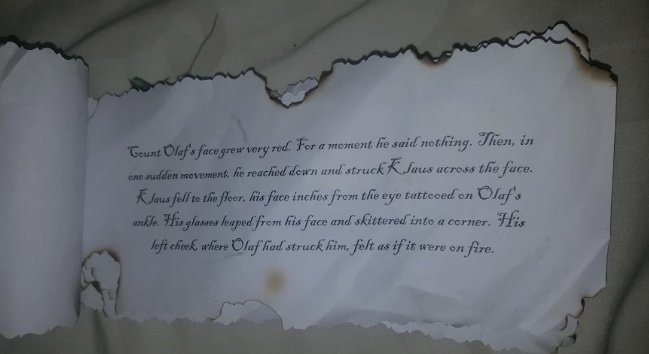 The burn book was a creative way to showcase the main quotes and events that happen in the story. The burned edges were a great touch to add more depth to the project. I thought it was awesome! I am so interested in the meal that Brittanee and Jamie made. It has been such a long time since I read a Series of Unfortunate Events. Was that the actual recipe from the book? Did you try it? What is in it? I just have so many questions! So creative and so fun! Sierra’s video was great. I can just see students watching the video and then wanting to read the book. It was a perfect trailer for the book, and Theodore was a great added touch and he was so cute!
The burn book was a creative way to showcase the main quotes and events that happen in the story. The burned edges were a great touch to add more depth to the project. I thought it was awesome! I am so interested in the meal that Brittanee and Jamie made. It has been such a long time since I read a Series of Unfortunate Events. Was that the actual recipe from the book? Did you try it? What is in it? I just have so many questions! So creative and so fun! Sierra’s video was great. I can just see students watching the video and then wanting to read the book. It was a perfect trailer for the book, and Theodore was a great added touch and he was so cute!
Author Bio: Jorden is from Escalon and is finishing her last year as a liberal studies student at Chico State. She hopes to become an elementary teacher back in her hometown of Escalon.
The first make that I chose to highlight from this week was Sean Gamer’s. Sean chose to make a Wanted sign with Count Olaf’s face on it. He explained how he felt that the Baudelaire children were close with each other because they didn’t really have anyone else in their lives after their parents died, and he related to that because him and his siblings are also very close. He felt that the children deserved some closure for the awful things that Count Olaf did to them and so he wanted to make a Wanted poster to help them find him, and as Sean so eloquently said,
“I want the kids to find him and push him off a cliff.”
Sean did a very good job of creatively expressing his hate for Count Olaf into this poster.
The second make that I chose to highlight was Brittanee Garcia’s. She actually made something that was of very good use to her: food! She explained how in the book, A Series of Unfortunate Events, Count Olaf forces the children to make a pasta dinner for him and his friends. She says that this task would be difficult for these children, but since they were able to work together so well, they were able to successfully make the dinner. I agree with her statement that this book teaches a lot of different lessons to children, like working together to solve problems. That is why this Brittanee’s creative make and I’m hoping that she enjoyed her pasta dinner just as much!
The last make that I would like to highlight is Jamielyn Borrego’s. She made a collection of quotes and passages from the book about the terrible fire. She then burned and tore and made these papers look like they had actually been in a fire. I loved her creativity with this and I feel a student would really like making something like this (as long as they do it safely with adult supervision). This booklet is a good way to focus on just the fire in the book and the extreme sorrow that came from it. I really liked this make because the fire is the centerpiece of this whole series; it was the catalyst for the rest of the book. I think this make was very creative, yet intellectual and was overall executed very well.
Overall, I thoroughly enjoyed getting to read and look at everyone’s makes. I feel that everyone put in a lot of hard work into creating something interesting for the class. The three that I chose of highlight were some of my favorites because of their uniqueness, creativity, and overall successfulness in the final project. I am excited to see what my classmates will come up with for the rest of the makes this year.
Author Bio: Kim is in her third year at Chico State. She is majoring in Liberal Studies and plans a career as an Elementary school teacher. When she is not in school, you can find her playing volleyball for the Chico State team.
I read the first book of A Series of Unfortunate Events by Lemony Snicket. In a nutshell, the book follows the lives of three very unlucky orphans who are sent to live with a distant relative plotting to steal their fortune. I was really happy to read it again as an adult because it gave me a different perspective on it than when I read it as a child. From a teacher standpoint, I think this book appeals to so many different students. It shakes up gender roles a bit and gives strong role models for getting through hard times. Lemony Snicket also does a fantastic job of making the reader feel equal to him. I think this is especially key for younger readers because he gives them a plethora of new vocabulary and that feeling of being grown up. To sum it up, this whole series will definitely make the cut into my classroom library.
As a class, we watched the Mac Barnett’s TED talk about why a good book is a secret door. Mac Barnett is an award winning children’s author and in my opinion, a genius. I think this talk is a serious highlight of this make cycle because it gives such meaning to the word “wonder” and an insight into what books a student will want to read. My favorite part of this talk is his evidence of how, we, as readers can know something isn’t real but also know it is real. For instance, three summers ago I went to Harry Potter world at Universal Studios in Orlando and even though I knew it wasn’t real, I was so elated to be there. I still tried the butterbeer and held the wands because J.K Rowling made them feel real.
Barnett says, “we know these characters aren’t real but we have real feelings for them.”
To me, that encompasses the magic of books.
Now, time to shout out some awesome makes! This week was so hard to choose, they were all so creative and amazing. Everyone who drew or made art, I commend you to the highest degree. I can’t draw very well so it’s always mind blowing to see people who can.
One make that stood out was Megan and Jody’s dictionary of Sunny Baudelaire’s (from A Series of Unfortunate Events) words. If you don’t know, Sunny is a baby who speaks strictly gibberish but Lemony Snicket gives meaning to those words. Megan and Jody did an excellent job of playing Lemony Snicket here and gave definitions to Sunny’s words. Not only did they embody Snicket with the definitions, but with their introduction as well.
They warn readers that “you will avoid wasting any more of your precious time on this useless collection of baby babbles that could only be of interest to an English 341 class or a group of children.”
Not only do Megan and Jody do a great job with their make, they thought of something so unique!
Another make that I want to shout out was Benjamin’s origami yoda (from Origami Yoda). This make was simple but so clever. I think this would be a great activity for a class to do while reading the book. I also really liked what he had to say about what origami yoda represents and that’s a level of consciousness. Something we all have inside us but often forget about, explains Benjamin. I think that would be a really important and valuable lesson to kids.
This make was simple but so clever. I think this would be a great activity for a class to do while reading the book. I also really liked what he had to say about what origami yoda represents and that’s a level of consciousness. Something we all have inside us but often forget about, explains Benjamin. I think that would be a really important and valuable lesson to kids.
I couldn’t pick just one make from the Babymouse series; I really loved everyone’s pictures. They were all unique from one another with different themes or settings incorporated. I learned from Alondra’s make that the book includes directions on how to draw babymouse which would be a great class activity. One thing that was interesting about all these makes is that they all included Babymouse’s famous heart on her clothing.
The last make I want to highlight is Sydney’s comic book from The Weenies Series. I loved the drawings and felt it showed the chapter perfectly. I think she had a very good idea about having students make comic strips for this book because the chapters are so short; it’s a great alternative to writing a summary.
I had a great time looking at everyone’s makes and am excited for more to come!
Author Bio: Savannah is a liberal studies major with a special education minor. She knew she wanted to teach special education in the 5th grade when her teacher would let her go help out in the special day class. Since then, it has been her passion. She took a gap year before coming to Chico State and taught outdoor education at Shady Creek Outdoor School as a student naturalist to students ranging from 4th-8th. Her goals are to eventually get her master’s as well as her PhD so that I can help teach the next round of educators.

